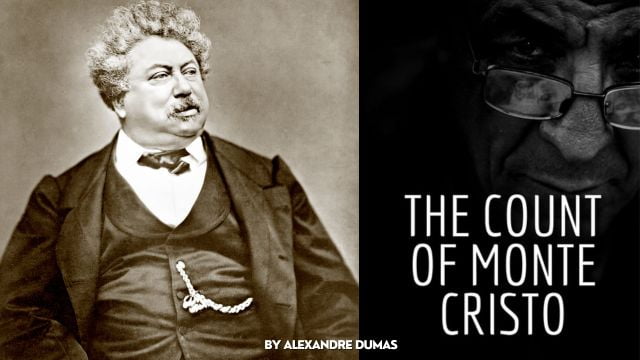
In the realm of classic literature, few tales resonate as powerfully as “The Count of Monte Cristo.” Summary This epic masterpiece by Alexandre Dumas weaves a narrative tapestry of revenge, betrayal, and redemption.
Join me on a journey through the labyrinth of Monte Cristo’s world as we delve into the riveting showdowns that define this timeless classic.
The Unveiling of Edmond Dantès
Our saga begins with a sailor named Edmond Dantes who is unjustly imprisoned, setting the stage for a transformation that echoes through the ages. Imagine a man emerging from the depths of despair, whose spirit has not been broken despite the cruelty inflicted upon him. As readers, we witness the birth of the mysterious Count of Monte Cristo.
When describing the development of Edmond, one cannot ignore the excellent strokes of Dumas’s pen. The story presents a vivid picture of a man burning with the twin flames of vengeance and justice. It is here that the first link to the fate of our duel is woven into the fabric of the story.
The Depths of Despair
Dumas thrusts us into Edmond Dantes’ abyss of despair, where the cold, damp walls of the Château d’If become both a physical and metaphorical prison. The reader feels the burden of each passing year, the monotony of solitude, and the slow erosion of hope. This is where change begins, where the seeds of revenge find fertile ground.
The Phoenix Rises
From the ashes of despair, Edmond Dantes emerged as the Count of Monte Cristo. This change is as much physical as it is psychological. Dumas masterfully explores the psyche of a man who suffers injustice, detailing his transformation from innocence to cunning. The spartan tone here heightens the effect, emphasizing the stark contrast between the crushed sailor and the rising avenger.
The Dance of Betrayal and Revenge
As we traverse the maze of Monte Cristo’s journey, the theme of betrayal takes center stage. The betrayal of Edmond Dantes becomes the crucible in which the Count is forged. Each act of betrayal becomes a thread in a tapestry of revenge, intricately entwining the characters in a dance of fate.
Learn More:
- Hollywood Clash: Priscilla Presley’s Sofia Coppola’s vs. Script
- The Madame Web Movie Effect Trailer Release Today 2024: Johnson & Sydney
- Aaron Rodgers Teases Comeback: Fans, Get Ready in 2023
Calculated Retribution
Picture the Count as a maestro, conducting a symphony of revenge with calculated precision. The story becomes a chessboard, with each move strategically planned to expose the perpetrators of the betrayal. The reader is drawn into the complexity of the Count’s mind, where emotions are tempered by intellect. This is not just a duel of physical prowess but of intellectual prowess.
Moral Quandaries
Dumas invites readers to grapple with the moral dilemmas woven around the idea of revenge. Is the Count justified in seeking vengeance, or does he risk becoming the very monster he seeks to vanquish? The narrative, in its conversational tone, forces readers to consider the shades of gray that define justice and morality.
Monte Cristo’s Chessboard: Characters in Play
Dumas has filled his story with characters as diverse as colors on an artist’s palette. From the noble Mercedes to the cunning Fernand, each character brings a unique flavor to the canvas. The Count, like a grandmaster, strategically leads them on the chessboard of destiny.
Intricacies of Characterization
Let’s pause to appreciate Dumas’ genius in crafting characters who are not mere caricatures but intricate pieces in a grand puzzle. The Count’s interactions with each character reflect the complexity of human relationships, adding depth to the narrative. It is a duel not only of swords but of intellect, emotions, and the essence of humanity.
The Enigmatic Count
Dive into the enigma of the Count himself, a character who embodies the duality of vengeance and redemption. The article uses strong verbs and descriptive language to peel back the layers of the Count’s personality, revealing scars of betrayal and flickers of humanity beneath his calculated exterior.

The Grand Unveiling: Edmond Dantès vs. The Count of Monte Cristo
As the story moves towards its climax, the fate of the duel reaches its peak. The unveiling of Edmond Dantes as the orchestrator of the intricate dance stuns readers. This is a moment of reckoning, a clash of past and present, justice and vengeance.
Emotional Crescendo
In crafting this epic spectacle, Dumas demonstrated the dexterity of a literary master. The reader is swept into a whirlwind of conflicting emotions, torn between sympathy for the betrayed Edmund and fear for the mysterious Count. The restrained tone of the story enhances the effect, due to which the seriousness of the moment remains in the mind of the reader.
Lingering Resonance
The article’s conclusion reflects the lasting impact of this grand unveiling. The emotional resonance of the duel resonates with the reader, inviting reflection on the complexities of human nature and the fateful consequences of the duel.
Conclusion: A Tapestry of Endings and Beginnings
As we say goodbye to the world of Monte Cristo, we are left with a tapestry woven with the threads of vengeance, betrayal, and redemption. The conflicting fates that define the narrative serve as a mirror to the complexities of our own lives. Dumas, with his eloquent prose, invites readers to contemplate the inexorable dance of justice, morality, and fate.
Ultimately, “The Count of Monte Cristo” transcends the boundaries of time, enthralling readers with its timeless tale of duels and epic showdowns. Let it be an invitation to traverse the labyrinth of Dumas’s creation, where each page is a step closer to uncovering the secrets of the human soul.




